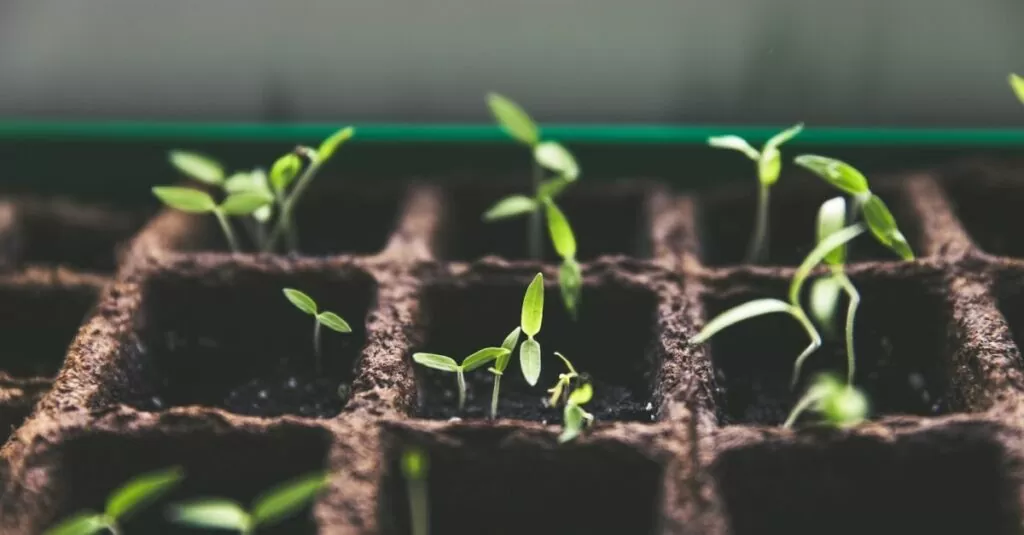So, what should you do with that teak dining table that’s showing its age? Maybe you found one at a flea market that looks like it used to be beautiful. Maybe you inherited one or just didn’t know how to care for the teak table you bought. Do you sell it? Toss it out on the curb? Hack it up for firewood? Please, please, please don’t trash it just yet. Take a few minutes to learn these tips and tricks for refinishing your old teak table. Some well-guided elbow grease can make a HUGE difference because of teak’s natural toughness.
So, here’s Patio Productions’s steps for refinishing teak, so you can end up with the best teak furniture.
Teak Refinishing Steps
- Assess your teak dining table’s condition
- Gather tools and materials
- Clean the table thoroughly
- Sand the surface
- Apply teak sealer or teak oil
- Add finishing touches and maintain
Now, a teak dining table isn’t any ole wood table. It’s a beautiful (often expensive) wood that can last generations if you take care of it. So, how do you care for teak furniture? Well, it’s just as important to know what NOT to do when refinishing one. I’ll cover each of these in their appropriate section, but I wanted you to see these important “don’t do’s” up-front.
Common Teak Refinishing Mistakes to Avoid
- Sanding too aggressively on veneered surfaces
- Going against the wood grain while sanding
- Leaving dust on the surface before applying finish
- Rushing the drying process between coats
- Neglecting regular maintenance after refinishing
Alright, I think we’ve established our ground rules. Let’s refinish that teak beauty!

Step 1: Assess Your Table’s Condition
Before you go all gung-ho with the sandpaper, take a moment to really examine your table. Is it solid teak or veneer? This is crucial, my friends. If it’s veneer, you’ll need to tread (super) lightly with the sanding to avoid breaking through that thin layer of teak goodness. Because once you sand past the teak, your teak is pretty much toast. So, for a teak veneer, use a finer (higher-number) grit. And definitely be super-careful with a power sander.
Also, take a moment to try to understand if it has been sealed in the past. If so, you’ll want to make sure you carefully remove it all during the sanding step below. If you leave some old sealant in there, you can get a really funky, uneven look when you re-treat it.
Step 2: Gather Your Teak-y Arsenal
Here’s what you’ll need to tackle this teak dining project like a pro.
Teak Refinishing Tools
- Protective gloves (trust me, your hands will thank you)
- Safety goggles (because nobody likes sawdust in their eyes)
- Dust mask (breathing is important, y’all)
- Teak cleaner
- Sandpaper (220-grit and 150-grit)
- Orbital sander (optional, but oh-so-helpful)
- Tack cloth
- Teak oil* or sealer
- Clean, lint-free cloths
- Patience (okay, so you can’t buy this, but it’s essential)
*You can find conflicting suggestions and advice about teak oil, so make sure to carefully read through that section of this article (here) before you purchase your materials.
Step 3: Clean That Teak Dining Table!
Time to get down and dirty. Mix up some teak cleaner according to the instructions and give your table a good scrub. We’re fans of Golden Care’s teak cleaner. Responsible ingredients plus a great clean? Sign us up.
Use a soft-bristled brush to work the cleaner into the grain, paying extra attention to any stubborn stains or grime.
Pro tip: If you’re dealing with really tough stains, try a mixture of one part white vinegar to four parts water. It’s like magic for teak!
Once you’ve scrubbed to your heart’s content, rinse the table thoroughly with clean water and let it dry completely. And I mean completely – moisture is not your friend in this process.

Step 4: Sand, Baby, Sand!
- Use two levels of grit, 150 to start and 220 for a smooth finish
- Always sand in the direction of the wood grain
- Let the sander do the work – don’t apply too much pressure
Here’s where the real transformation begins. Start with 150-grit sandpaper and work your way up to 220-grit for a silky-smooth finish. Always sand in the direction of the grain – going against it is like trying to pet a cat backwards. It just doesn’t work out well for anyone involved.
If you’re using a powered sander, be gentle. Let the tool do the work and don’t apply too much pressure. We’re aiming for a smooth, even surface, not a topographical map of the Grand Canyon.
Once you’ve sanded to perfection, wipe away all the dust with a tack cloth. Get into every nook and cranny – leftover dust will mess up your finish faster than you can say “D’oh!”
Step 5: To Oil or To Seal a Teak Dining Table?
Now comes the million-dollar question: should you use teak oil or a teak sealer? Both have their merits and uses, so here’s my two cents.
Teak Oil vs. Sealer
| Aspect | Teak Oil | Sealer |
|---|---|---|
| Purpose | Restore properties of teak’s natural oils | Forms protective layer on teak’s surface |
| Best for | Indoor less-used teak furniture | Heavily-used indoor or outdoor furniture |
| Appearance | Rich, warm glow | More subtle finish |
| Penetration | Soaks into wood | Hardens on top of teak surface |
| Durability | Needs frequent reapplication | Longer-lasting protection |
| Application | Easy to apply | May require more skill |
Making the right choice between teak oil and teak sealer requires you to understand one of teak’s unique traits: its own natural oils. These naturally-occurring oils give teak wood an inherent resistance to moisture (and by extension, mildew), but they don’t make your teak dining table completely immune to mildew or moisture damage.
(Fun fact: wood-eating pests also don’t like natural teak oils, helping further protect your fancy teak. Take that, bugs!)
Then, over time, these naturally-occurring oils are stripped away through regular furniture use, rain, and sun exposure (evaporation). And as the wood dries out, your teak dining table loses its youthful honey-warm tone. It also becomes more and more susceptible to moisture and mildew. This is where both teak oil and teak sealer come in, but they serve different purposes.
Teak Oil
The short version is this: applying teak oil is basically just replacing those naturally-occurring oils that your teak furniture lost over time. When you apply it, the teak oil penetrates down into the grain and reinvigorates teak’s natural beauty and defenses. But again, teak oil (the natural stuff or what you re-apply) don’t make your furniture moisture-proof. So teak oil is best applied on less-used, indoor furniture because those pieces see less wear-and-tear and moisture.
Teak oil does help retain that rich, warm glow that makes teak so desirable. So if your furniture is more aesthetic than functional, teak oil is a fantastic option. But since it doesn’t actually prevent future moisture, stains, or mildew from penetrating teak’s grain, teak oil isn’t really protecting your newly-refinished teak dining table from regular use or weather exposure. I don’t recommend just teak oil for outdoor teak.
If you use teak oil, you’ll need to reapply it frequently to maintain your furniture’s beauty. So check your teak oil’s instructions for suggested frequency. And you’ll still need to be super watchful for any future moisture damage.

Teak Sealer (or Protector)
A teak sealer, on the other hand, hardens into an additional protective barrier against use, moisture, and weather. It won’t necessarily enrich your teak’s color, but you’ll get longer-lasting protection against the regular wear-and-tear or nature’s elements. I highly recommend you use sealer if your teak dining table gets used regularly or will be living outdoors.
What’s our teak sealer of choice? Over the years, the Patio Productions team has experimented with many different teak care solutions. We’re happy with Golden Care’s Teak Protector . (If you’re refinishing teak patio furniture you purchased from Patio Productions, the Honey-Brown color matches most of our teak products. But they also have a range of other teak colors.)
Applying Teak Sealer or Oil
Whichever you choose, apply it evenly with a clean cloth, following the grain of the wood. I’ve gotten the best results by applying multiple thin coats (I usually go with 3 or 4). Let each coat dry completely before adding another.

Step 6: The Final Touches
Once your final coat is fully dry, step back and admire your handiwork. Look at that gorgeous table! Who knew it was hiding under all that gray weathering?
But let’s keep from backsliding, too. Keep your newly refinished teak dining table looking its best by wiping it down regularly with a damp cloth. Then, reapply oil or sealer as needed. And for outdoor teak tables, a well-fitting waterproof cover is great when its not in use or particularly bad weather rolls in.

Now, Go Enjoy Your Refinished Teak!
Refinishing a teak dining table does require a mix of know-how and elbow-grease. But it’s definitely worth it! That beautiful, smooth-to-the-touch teak table just makes every meal that much more fancy and elegant. And you get to brag to your guests how you masterfully refinished it all by yourself.
Just make sure you bring your patience and attention to detail. Don’t rush through these teak refinish steps. You’ll be happy you took the time, and your teak furniture will reward you by looking great for many patio parties to come.

Eben Jol is a creative media specialist with over 10 years of experience creating helpful content for outdoor brands. In that time he has learned the ins and outs of the outdoor industry and has a keen understanding of what topics customers and information seekers need to know when they are planning and furnishing their outdoor space. He has gathered data and reported on industry insights for organizations such as the ICFA, and in his spare time, loves relaxing in his own backyard (and the great outdoors at large) with his wife and 3 kids.










